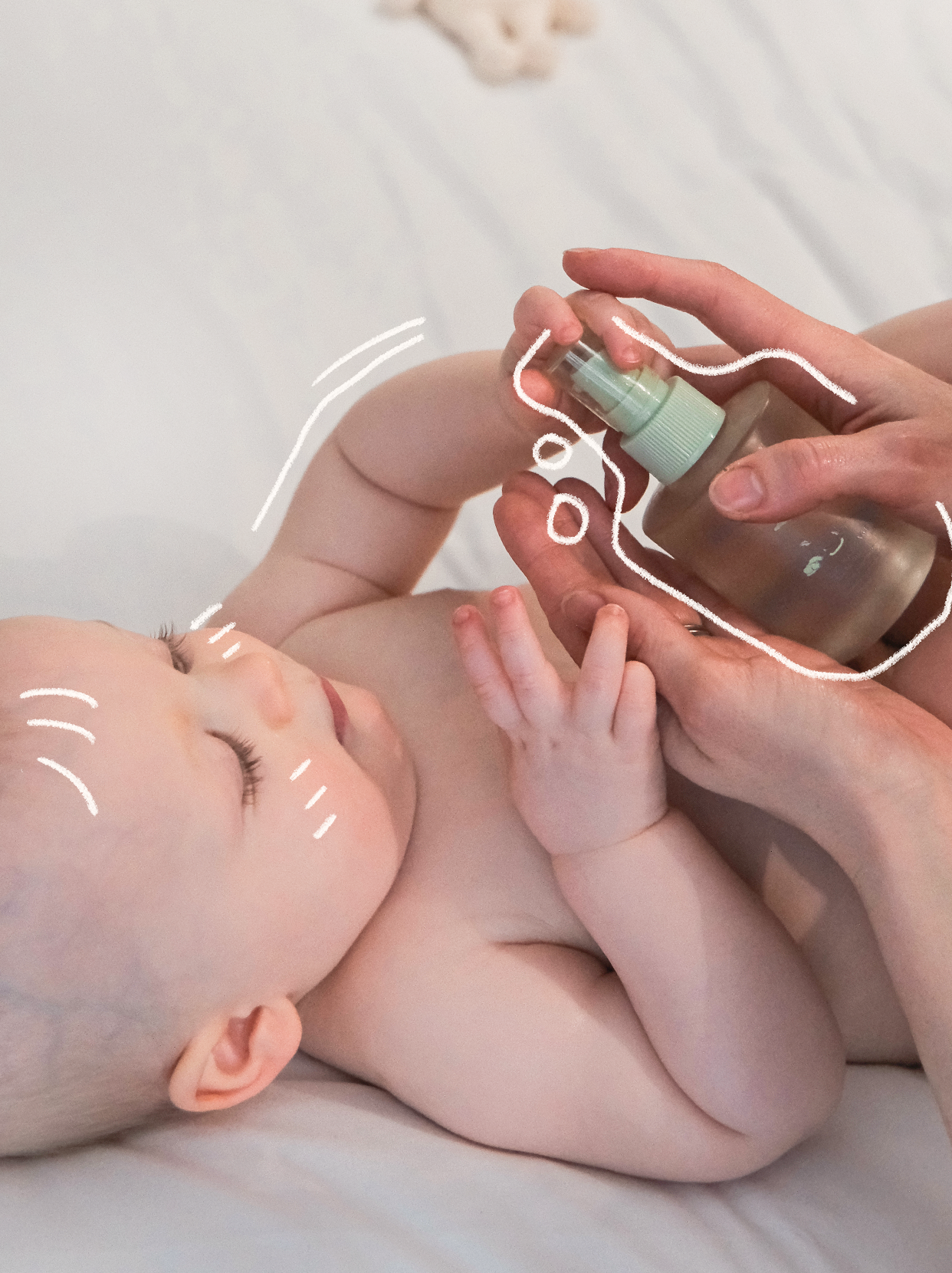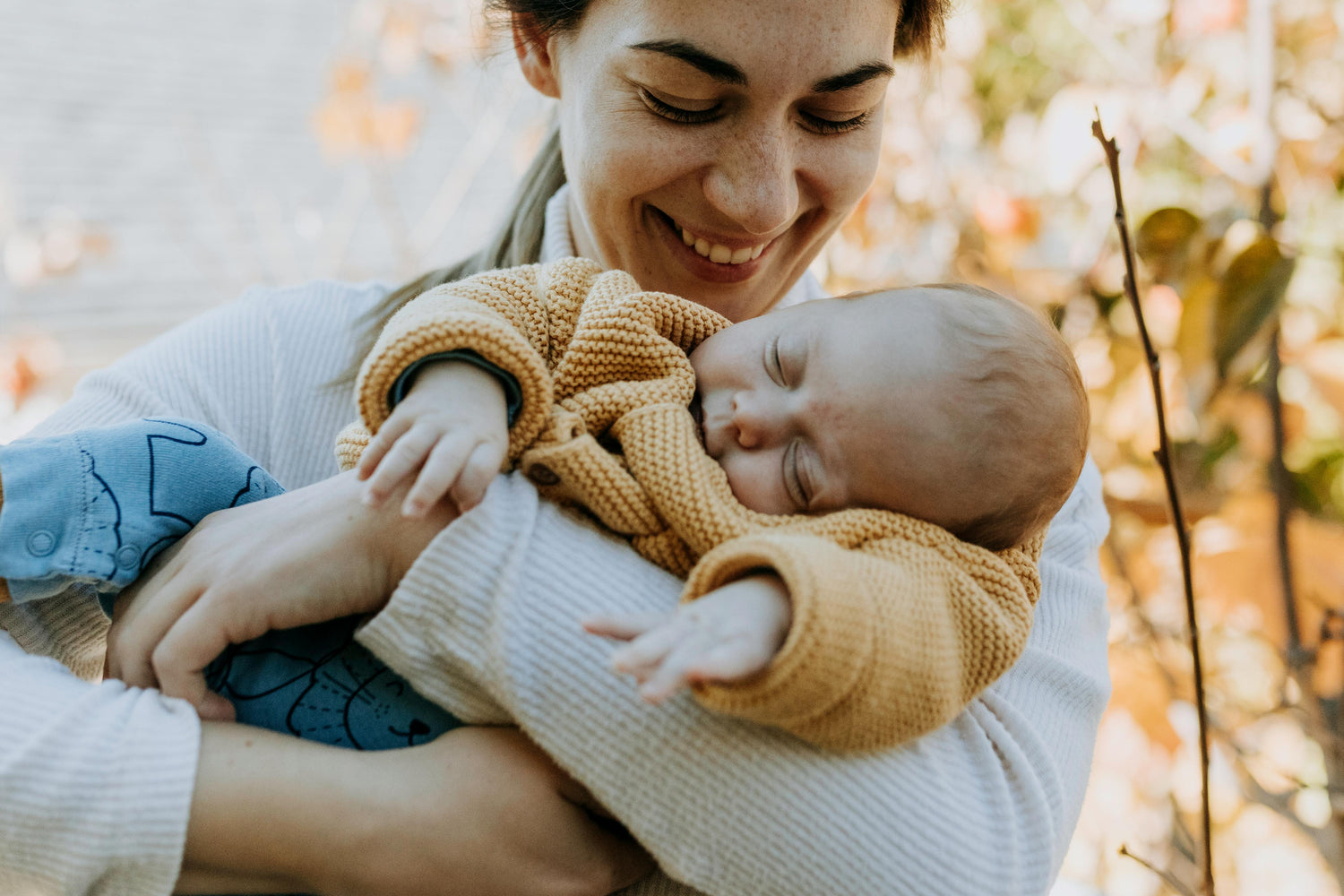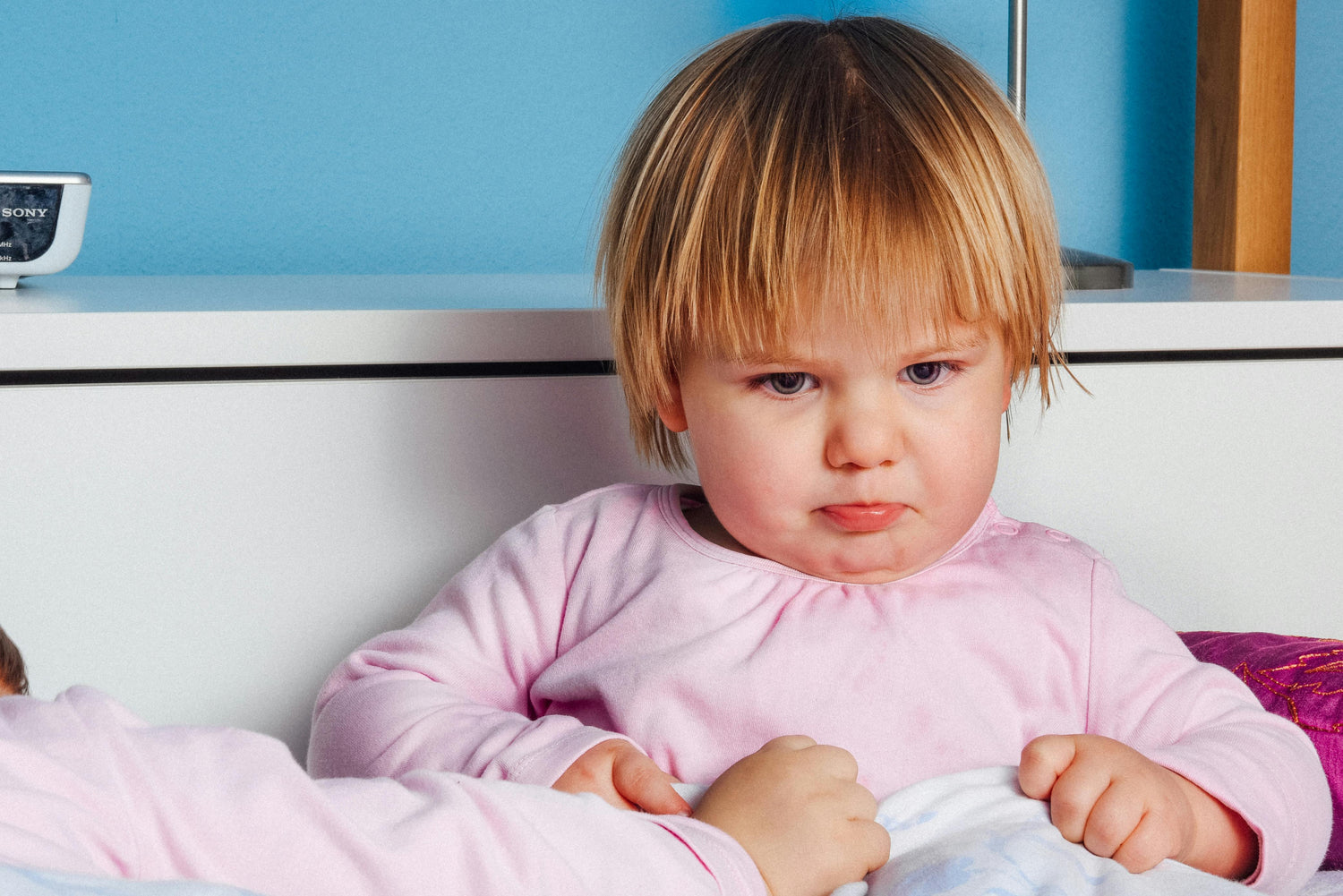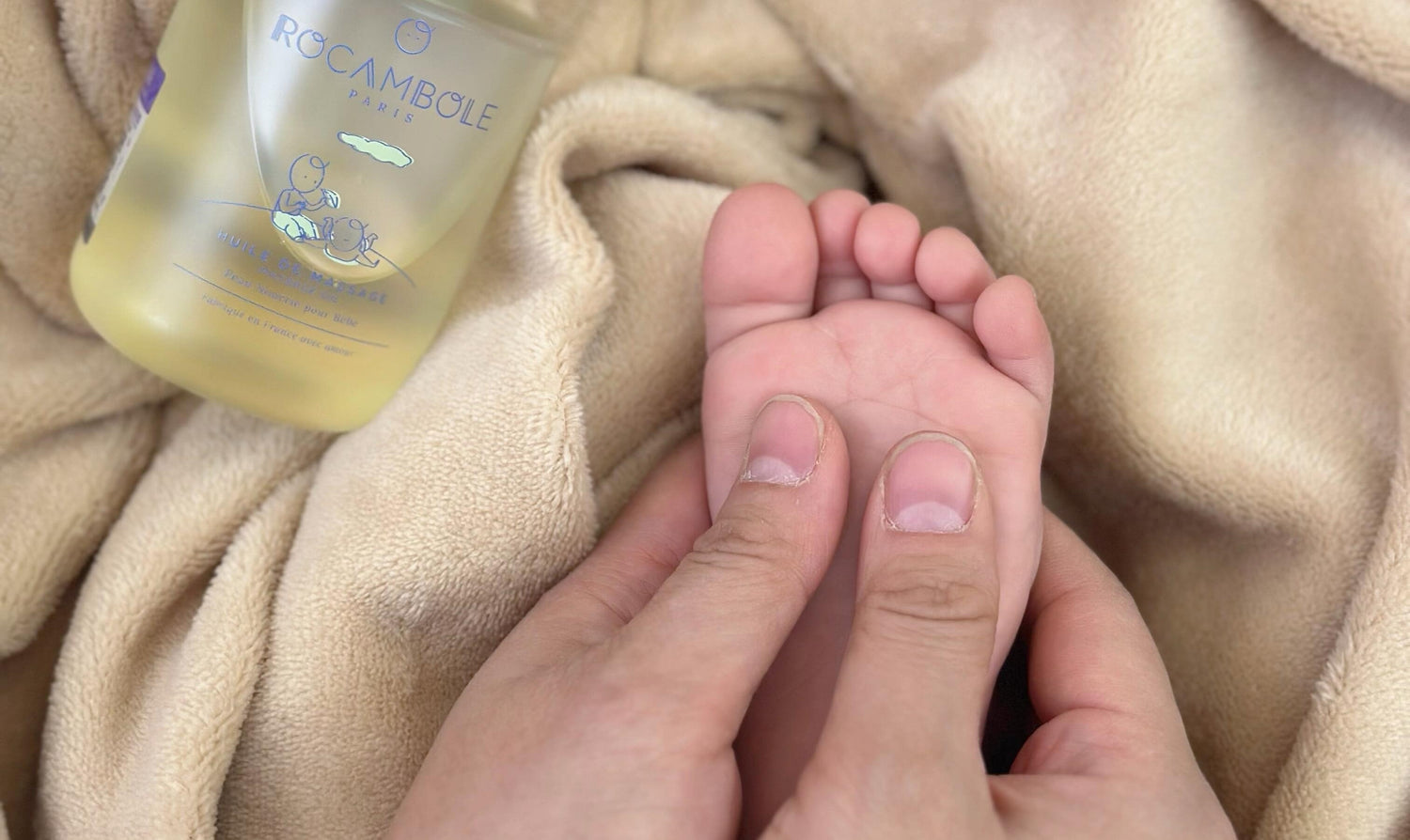Newborn Hair: What to Expect and How to Care for Baby Hair
Some newborns are born with a full head of hair, while others are born with beautiful little bald spots. The truth is, newborn hair comes in all textures, colors, and even locations — from head to toe.
In this article, we'll explain what to expect from your newborn's hair and how to care for it so your little one can have a "good hair day" every day.
Newborn Hair: What to Expect
There's no way to know for sure what your newborn's hair will look like. They may be born with curly hair, straight as arrows, or no hair at all. As for color, that's a real surprise.
Hair Growth In Utero
Even while your baby is still in your womb, his or her hair begins to grow. Around 14 weeks gestation, hair follicles appear on the fetus' scalp and body. Between 16 and 20 weeks, your baby develops lanugo, the fine, downy hair that covers the body and face.
Lanugo plays several essential roles:
- It helps the vernix (a white, creamy substance that covers the fetus) adhere to the skin, thus protecting the baby.
- It regulates body temperature and hormones.
- It keeps the baby warm while it grows.
Thanks to melanin, lanugo gets its initial color around the 23rd week of gestation. At birth, newborns usually lose this lanugo, a process often observed between the 24th and 28th week of gestation. If your child is born with lanugo, it will usually be lost within a few weeks to a few months after birth.
Hair at birth
Newborn hair is one of your baby's most distinctive features. However, don't get too attached to it, as your child's hair will go through many changes during their first year!
Hair Loss and Growth in Newborns
By the time your newborn reaches six months of age, it is very likely that most of the hair he or she was born with will have been lost. After a few months of thick hair, your baby may suddenly go bald. Don't worry, this is completely normal and the hair will grow back.
This hair loss is due to a drop in your baby's hormones, which until then depended on maternal hormones. This phenomenon, called the exogenous phase, is followed by a new phase of hair growth. The new hair that grows may be very different from the hair your baby was born with, both in color and texture.
Hair Color Changes
Once your child's hair begins to grow back, usually between six and twelve months, there's no way to predict what color or texture it will have. For example, a child born blonde may turn red, or a straight hair may turn into a natural curl. It all depends on your child's unique combination of chromosomes, because genetics offers a multitude of possibilities!
Tips to Promote Hair Growth in Your Newborn Baby
Although your baby's hair grows back quickly, you can help the process along. Here are some tips to help get his hair back in the spotlight:
1. Minimize Time Spent on Your Back
Reduce the time your baby spends on his or her back while awake to avoid friction that can lead to hair loss.
2. Brush the Scalp
Even if your baby is bald, gently brushing his scalp stimulates blood circulation and promotes hair growth.
3. Use a Comb for Wet Hair
Avoid brushing wet hair. Instead, use a wide-toothed comb to gently detangle knots.
4. Ensure a Healthy Diet
A nutrient-rich diet is essential. Feed your baby breast milk for at least six months, then introduce nutrient-rich solid foods.
5. Massage the Scalp with Coconut Oil
Talk to your pediatrician about applying coconut oil to your baby's head after bathing, twice a week. Coconut oil, rich in antioxidants and vitamin E, can help nourish hair.
How to Care for Your Newborn's Hair
Take a “simple” and “minimalist” approach to caring for your baby’s hair. Here are some practical tips:
Use Gentle Products
Make sure any product used on your baby's scalp is very gentle. Opt for a tear-free shampoo that is suitable for newborns. An extra-gentle shampoo is tear-free, fragrance-free, and rinses out easily. It is best to choose products that are made mostly of natural, hypoallergenic ingredients to minimize the risk of allergic reactions.
Do Not Wash Too Frequently
While you want to keep your baby's hair clean, over-washing can strip away essential natural oils. For most babies, washing two to three times a week is enough. For children with textured hair, such as Black or biracial children, limit washing to once or twice a week and be sure to moisturize hair well.
Avoid Pulling or Towing
Your baby's hair is delicate and the scalp is sensitive. Gently detangle knots before brushing and use a wide-toothed comb or soft-bristled brush, especially for natural hair. Avoid brushing dry hair.
Use a Soft Towel to Dry Hair
Dry your baby's hair using a soft towel and a gentle touch. Drying your baby's hair using an abrasive method can cause hair breakage and make your baby unhappy.
Avoid Accessories
Avoid accessories like scrunchies or barrettes that pull on the hair. Your baby's skin and hair are delicate and accessories can irritate the scalp.
Massage Your Baby's Head
Stimulate your baby's hair growth by gently massaging their scalp. Hold their head in your hands and gently massage with your fingertips. This promotes blood circulation, relieves tension, improves sleep and can help hair grow better.
Encourage Tummy Time
Tummy time helps prevent hair loss due to friction and promotes strengthening of neck muscles and development of motor skills. Plus, it helps prevent flat head syndrome.
Treat Cradle Cap Early
If you notice scales on your baby's scalp, treat them as soon as they appear. Cradle cap can be linked to hair loss, and early treatment can prevent long-term problems.
Wait Before Cutting Hair
Resist the urge to cut your baby's hair too early. It's best to wait until your baby can sit up properly, usually around six months, when he or she develops good head and neck control. Consult a professional who is experienced in cutting children's hair, and keep a lock of hair as a keepsake for the baby book.
Love Your Little One's Hair Now
Now you have a better idea of what to expect and how to care for your baby's hair, whether it's abundant or not at all. Don't panic when the inevitable hair loss occurs and enjoy the surprise of new growth.
References
- American Academy of Pediatrics (AAP) . “Hair Care for Newborns.” www.aap.org
- World Health Organization (WHO) . "Nutrition for Healthy Hair Growth . " www.who.int
- Journal of Pediatric Dermatology . “Lanugo and Hair Growth in Newborns.” 2023.
- Mayo Clinic . “Newborn Hair Loss: What to Expect.” www.mayoclinic.org



